Bottlenose Dolphin Photo-ID
Bottlenose dolphin neonate next to a presumed mom. Photo by Danielle Waples, Duke Marine Lab under NOAA/NMFS permit.
Listen to Dolphins at Shackleford Banks

Bottlenose dolphin, Beaufort, North Carolina – 26 Dec 2014. Photo by Keith Rittmaster under NOAA/NMFS permit.
Tursiops truncatus, dolphin dorsal fin photo-identification
We know less about bottlenose dolphins (Tursiops truncatus) than you might think. That’s what the Photo-ID dolphin research project is all about.
Since 1985, Keith Rittmaster, Vicky Thayer, and colleagues have been permitted through NOAA Fisheries to study dolphins by making regular trips to photograph the dorsal fins of the dolphins they see.
Researchers have developed techniques for identifying individual dolphins by the scars and notches acquired on their dorsal fins – a process called photo-identification (Photo-ID). This is tricky work, as these distinguishing characteristics can change over time or be obscured in some photos.
Staff and volunteers spend hours comparing hundreds of new photos from survey trips on the research vessel “Spyhop.” If they find a match, they look back at the record to see when that dolphin was spotted before, who s/he was with, reproductive history (if a known mom), and much more.
Researchers have been able to monitor the annual presence of individual dolphins, and through collaborations with neighboring researchers at VA Marine Science Museum, Nags Head Dolphin Watch, National Marine Fisheries Service, Duke Marine Lab, UNC-Wilm., and Hubbs Research Institute, we have tracked the movements of individuals as far south as central Florida and as far north as Long Island, NY. We are also currently studying association patterns and reproductive rates of known dolphins.
We see bottlenose dolphins year-round in Carteret County, but they aren’t the same individuals. Photo-ID has highlighted several patterns. Our best-known dolphins, ones that we have photographed more than 50 times over 15-25 years, generally exhibit seasonal presence patterns – some we know as our “winter” dolphins and others we call our “summer” dolphins, with little or no overlap.
Other dolphins we know less-well demonstrate spring and fall sighting patterns. Many of our known dolphins have been found stranded dead on our shores (see the Marine Mammal Stranding Network page). Bottlenose dolphins have a lot to teach us about their biology, behavior, and impacts of our activities on their lives.










